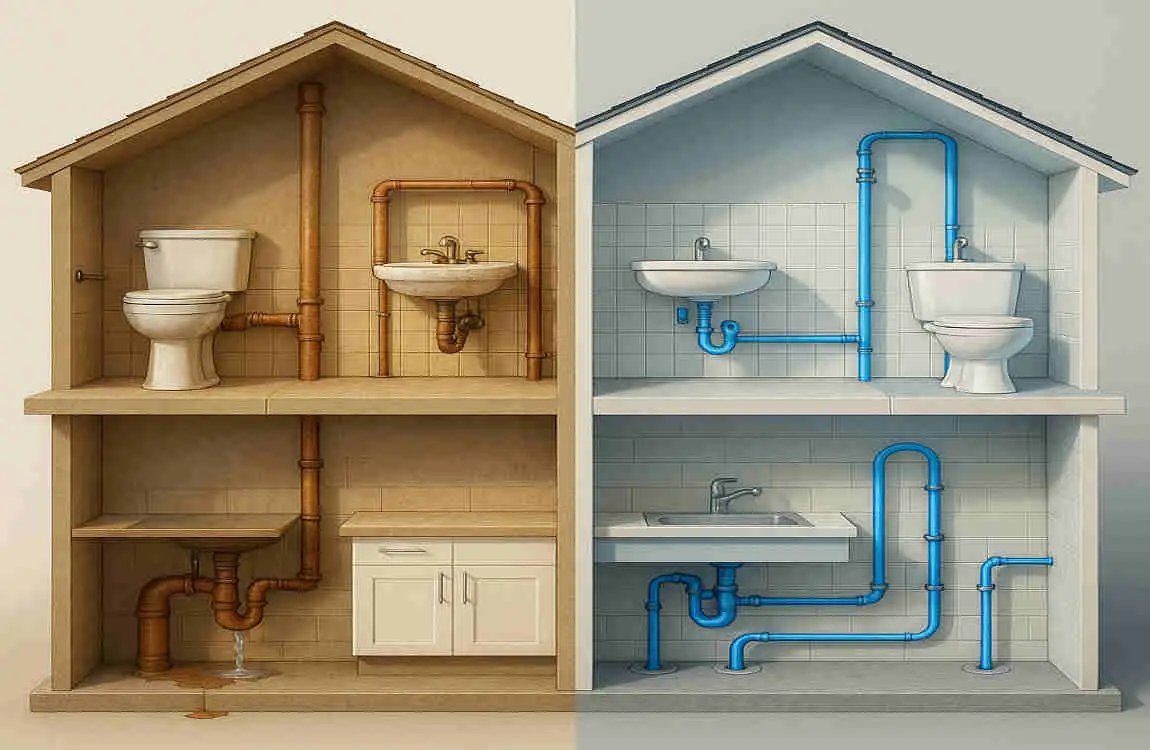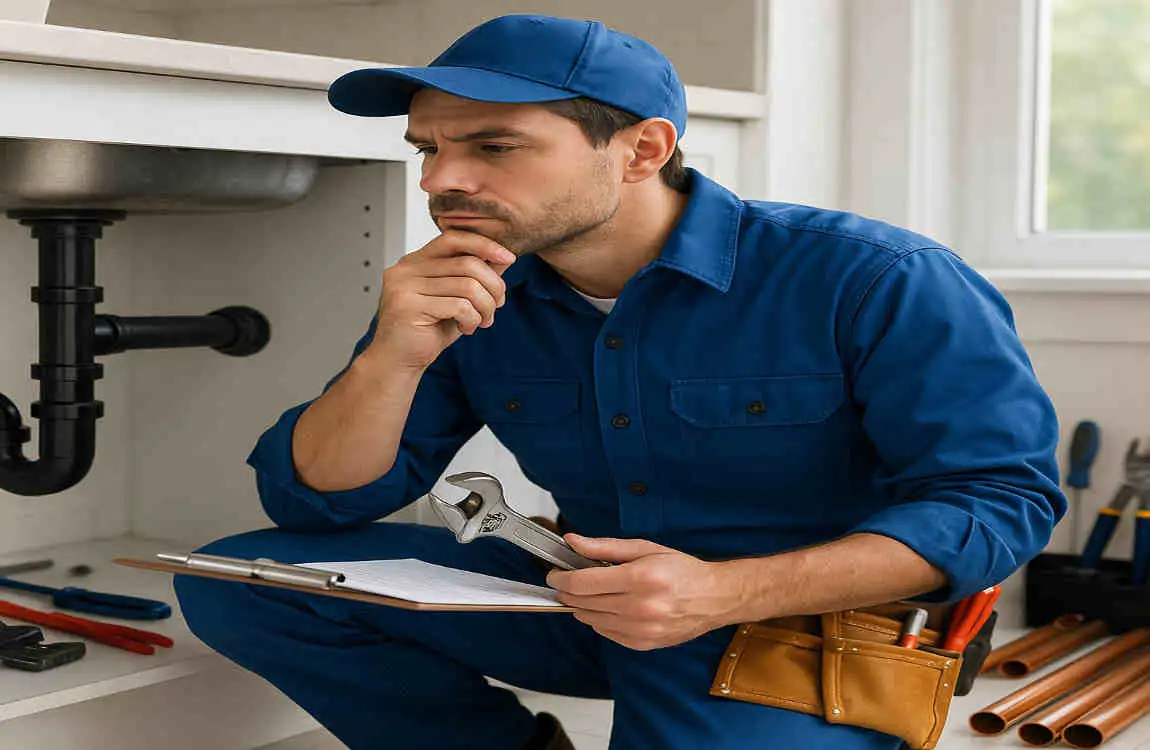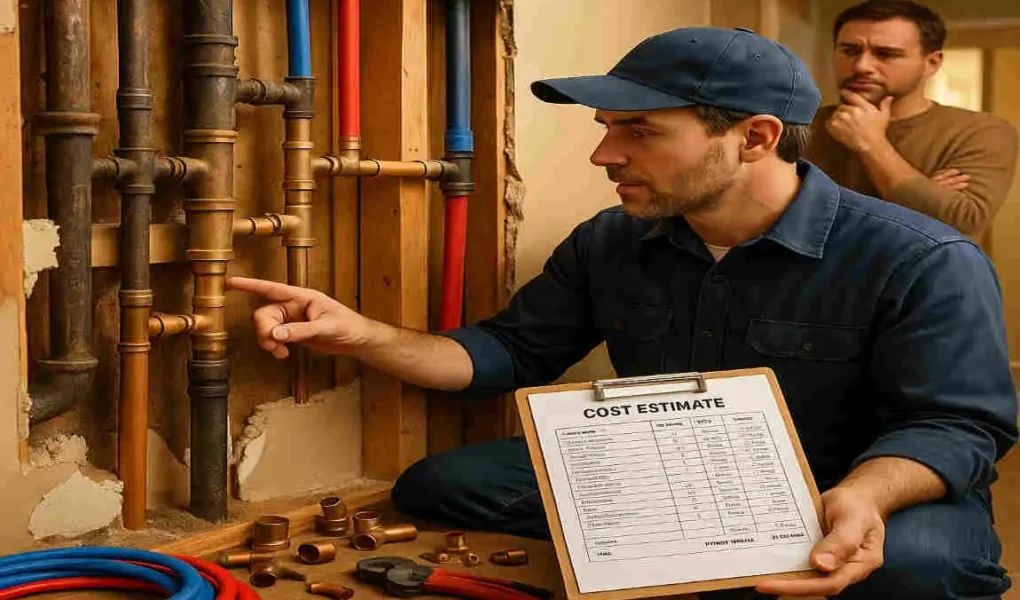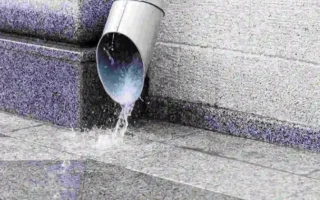Are you considering replumbing your house? It’s a significant decision, and understanding the costs involved is essential before you begin.
We’ll cover everything from the basics of house replumbing to the factors that influence costs, average price ranges, and even tips on how to save money.
What Does Replumbing a House Mean?

Definition and Scope of Replumbing
Replumbing a house involves replacing the existing plumbing system with new pipes, fixtures, and fittings. It’s a comprehensive process that ensures your home’s water supply and drainage systems are up-to-date and functioning correctly.
Common Reasons for Replumbing
There are several reasons why homeowners might need to replumb their houses:
- Old Pipes: If your home has outdated pipes that are prone to leaks or corrosion, replumbing can be a wise investment.
- Leaks: Persistent leaks can cause water damage and mold growth, necessitating a replumbing project.
- Renovations: When undertaking major home renovations, it’s often a good idea to update the plumbing system to match the new layout and design.
Differences Between Partial and Full Replumbing
- Partial Replumbing: This involves replacing only a portion of the existing plumbing system, usually to address specific issues or to accommodate renovations in a particular area of the house.
- Full Replumbing: As the name suggests, this entails replacing the entire plumbing system throughout the house. It’s a more extensive and costly project, but it ensures a complete overhaul of your home’s water and drainage infrastructure.
Factors Influencing the Cost to Replumb a House
When estimating the cost to replumb your house, several factors come into play. Let’s take a closer look at each of these:
Age and Size of the House
- Age: Older homes may have more complex plumbing systems that require more extensive work, potentially increasing costs.
- Size: Larger homes with more bathrooms and fixtures will naturally have higher replumbing costs compared to smaller properties.
Type of Plumbing System and Materials Used
- Plumbing System: The type of plumbing system in your home, such as copper, PEX, or PVC, can impact costs. Some materials are more expensive than others.
- Materials: The quality and brand of pipes, fittings, and fixtures you choose will also affect the overall cost. Higher-end materials may come with a higher price tag but can offer better durability and performance.
Extent of Plumbing Work Needed
- Partial vs Full Replumb: As mentioned earlier, the scope of the project (partial or complete replumbing) will significantly influence the cost. A full replumb will be more expensive than a partial one.
Accessibility of Plumbing Infrastructure
- Walls: If pipes are located within walls, accessing them may require demolition and repair work, adding to the overall cost.
- Underground: Underground pipes can be challenging to access and replace, resulting in increased labor costs.
- Crawl Spaces: Pipes in crawl spaces may be easier to access than those in walls or underground, but the work environment can still present challenges for plumbers.
Geographic Location and Local Labor Rates
- Location: The cost of living and local labor rates in your area will impact the price of replumbing services. Urban areas and regions with a higher cost of living may have higher labor costs.
- Labor Rates: Plumbers’ hourly rates can vary significantly depending on their experience, reputation, and location. It’s essential to get multiple quotes to compare prices.
Permits and Inspections Costs
- Permits: Depending on your local regulations, you may be required to obtain licenses for replumbing work. These permits come with associated fees that should be factored into your budget.
- Inspections: After the replumbing is complete, inspections may be required to ensure compliance with building codes. These inspections can also incur additional costs.
Unexpected Issues
- Mold: If mold is discovered during the replumbing process, it may need to be remediated, which would add to the overall cost.
- Asbestos: In older homes, asbestos may be present in certain materials. If found, it requires professional removal, which can be expensive.
- Structural Damage: If the replumbing project reveals underlying structural issues, such as damaged walls or floors, these will need to be addressed, which will increase the project’s cost.
Average Cost Range for Replumbing a House
Now that we’ve covered the factors influencing plumbing costs, let’s examine some average price ranges to provide a clearer idea of what to expect.
National and Regional Average Cost Estimates
- National Average: According to recent data, the national average cost to replumb a house ranges from $3,000 to $15,000, with most homeowners paying around $7,500.
- Regional Variations: Costs can vary significantly depending on your location. For example, in urban areas with higher labor rates, the cost may be at the higher end of the spectrum, while in rural areas, it may be closer to the lower end.
Breakdown of Low-End, Average, and High-End Replumbing Costs
- Low-End: For a small house with a partial replumbing using cost-effective materials, you should expect to pay around $2,000 to $5,000.
- Average: A medium-sized house with a full replumb using mid-range materials could cost between $5,000 and $10,000.
- High-End: A large house with a full replumbing using high-end materials and fixtures may cost anywhere from $10,000 to $20,000 or more.
Comparison of Costs for Different House Sizes
House Size Average Replumbing Cost
Small (1-2 bathrooms) $3,000 – $7,000
Medium (2-3 bathrooms) $5,000 – $10,000
Large (3+ bathrooms) $8,000 – $15,000
Inclusion of Material and Labor Costs
When estimating replumbing costs, it’s essential to consider both material and labor expenses:
- Materials: Depending on the type and quality of pipes, fittings, and fixtures you choose, material costs can range from 20% to 40% of the total project cost.
- Labor: Labor costs typically account for the majority of the total replumbing expense, ranging from 60% to 80% of the overall price. Plumbers’ hourly rates can vary, but you can expect to pay between $50 and $150 per hour, depending on your location and the plumber’s level of experience.
Detailed Cost Breakdown
Now, let’s break down the costs associated with replumbing your house in more detail.
Cost of Materials
- Pipes: The cost of pipes depends on the material you choose. Here’s a rough estimate of pipe costs per linear foot:
- Copper: $2 – $4
- PEX: $0.50 – $1
- PVC: $0.30 – $0.70
- Fittings connect pipes and are available in various types and materials. Budget around $5 to $20 per fitting, depending on size and material.
- Fixtures: If you’re replacing fixtures, such as faucets, showerheads, or toilets, factor in the costs associated with them. Prices can range from $50 to $500 or more per fixture, depending on quality and brand.
Labor Charges
- Plumber Hourly Rates: As mentioned earlier, the hourly rates of plumbers can vary significantly. In general, expect to pay between $50 and $150 per hour, with more experienced plumbers charging higher rates.
- Duration: The project’s duration will depend on its scope and complexity. A partial replumb might take a few days, while a full replumb could take a week or more. Multiply the hourly rate by the estimated number of hours to get a rough labor cost estimate.
Additional Costs
- Demolition: If walls need to be opened up to access pipes, demolition costs can add up. Budget around $1 to $3 per square foot for demolition work.
- Cleanup: After the replumbing is complete, you may need to factor in the costs of cleanup. This can range from $200 to $500, depending on the extent of the work.
- Permits: Don’t forget to include the cost of any necessary permits in your budget. Permit fees can vary by location but typically range from $50 to $500.
Typical Costs for Popular Pipe Materials
- Copper: Copper pipes are durable and resistant to corrosion, but can be more expensive. Expect to pay around $5 to $10 per linear foot installed.
- PEX: PEX pipes are flexible, easy to install, and cost-effective. Installation costs typically range from $1 to $3 per linear foot.
- PVC: PVC pipes are commonly used for drain and vent lines. Installation costs usually range from $0.50 to $2 per linear foot.
Step-by-Step Guide to Estimating Replumbing Costs
Now that you have a better understanding of the factors and costs involved, let’s walk through a step-by-step guide to estimating the total cost to replumb your house.
Inspect Your Current Plumbing Condition
- DIY Inspection: You can start by inspecting your plumbing yourself. Look for signs of leaks, corrosion, or low water pressure. Check under sinks, around toilets, and in basements or crawl spaces.
- Professional Inspection: For a more thorough assessment, consider hiring a professional plumber to inspect your plumbing system. They can identify any hidden issues and provide a detailed report.
Determine the Replumbing Needs
- Full or Partial: Based on your inspection, determine whether a full replumb or a partial replumb is needed. Consider the age and condition of your pipes, as well as any planned renovations, when determining the best course of action.
- Scope of Work: Identify the areas of your home that require replumbing and the specific components (pipes, fittings, fixtures) that need to be replaced.
List of Materials and Fixtures Needed
- Pipes: Calculate the total linear footage of pipes needed for your project. Consider the type of pipe material you want to use and its associated cost.
- Fittings: Determine the number and types of fittings required for your replumbing project. Factor in their expenses based on the materials and sizes you choose.
- Fixtures: If you’re replacing any fixtures, create a list of the specific items you need, along with their associated costs.
Obtain Multiple Quotes from Licensed Plumbers
- Research: Look for licensed and reputable plumbers in your area. Read reviews, ask for recommendations, and check their credentials.
- Quotes: Contact at least three different plumbers and request detailed quotes for your replumbing project. Ensure the quotes include a detailed breakdown of material and labor costs.
Calculate Labor and Additional Fees
- Labor: Based on the quotes you receive, calculate the labor costs for your project. Consider the estimated duration and the plumber’s hourly rate.
- Additional Fees: Don’t forget to factor in any additional fees, such as demolition, cleanup, and permit costs.
Budgeting for Contingency and Unexpected Expenses
- Contingency: It’s always a good idea to include a contingency budget of around 10% to 20% of the total estimated cost. This will help cover any unexpected expenses or changes in scope.
- Unexpected Expenses: Be aware that during the replumbing process, unforeseen issues such as mold, asbestos, or structural damage may arise. Having a contingency budget can help you navigate these challenges without overspending.
How to Save Money on Replumbing Costs
While replumbing your house is a significant investment, there are ways to save money without compromising on quality. Here are some tips to help you keep costs down:
Opt for Cost-Effective Materials
- Research: Take the time to research different pipe materials and their associated costs. While copper may be durable, PEX or PVC pipes can be more budget-friendly options.
- Quality: Don’t sacrifice quality for the sake of cost savings. Choose materials that offer a good balance between affordability and durability.
Schedule Work During Off-Peak Seasons
- Timing: Schedule your replumbing project during off-peak seasons when plumbers may have more availability and offer lower rates.
- Avoid Peak Times: Try to avoid scheduling replumbing during busy seasons, such as spring or summer, when demand for plumbing services is high.
Address Plumbing Issues Early
- Proactive Approach: Don’t wait until minor plumbing issues turn into major problems. Addressing leaks or low water pressure early on can help prevent the need for extensive replumbing.
- Regular Maintenance: Regularly inspect and maintain your plumbing system to catch and fix issues before they escalate.
Hire Reputable but Reasonably Priced Plumbers
- Research: Take the time to research and compare different plumbers in your area. Look for licensed professionals with good reviews and reasonable rates.
- Multiple Quotes: Always obtain various quotes to ensure you’re getting a fair price for the work.
DIY Minor Plumbing Repairs
- Simple Fixes: If you’re comfortable with basic plumbing repairs, consider tackling minor issues yourself before hiring a plumber. This can reduce the project’s scope and save on labor costs.
- Know Your Limits: Be honest about your DIY skills and don’t attempt repairs beyond your abilities. Hiring a professional for complex issues is often worth the investment.
Signs You Might Need to Replumb Your House
How do you know when it’s time to replumb your house? Keep an eye out for these common signs:
Recurring Leaks and Water Damage
- Persistent Leaks: If you’re constantly dealing with leaks, even after repairs, it may be a sign that your pipes are deteriorating and require replacement.
- Water Damage: Stains on walls or ceilings, warping floors, or mold growth can indicate hidden leaks and the need for replumbing.
Discolored or Low Water Pressure
- Discolored Water: If your water appears rusty or discolored, it could be a sign of corroding pipes that need to be replaced.
- Low Water Pressure: Consistently low water pressure throughout your home may indicate a problem with your plumbing system that requires attention.
Visible Corrosion or Rust on Pipes
- Surface Rust: If you can see rust or corrosion on exposed pipes, it’s likely that the pipes within your walls are in a similar condition and may need to be replaced.
- Leaks at Joints: Leaks occurring at pipe joints can be a sign of corrosion and the need for replumbing.
Frequent Pipe Bursts or Backups
- Pipe Bursts: If you’re experiencing frequent pipe bursts, it’s a clear indication that your pipes are failing and need to be replaced.
- Backups: Regular backups in your drains or toilets can be caused by deteriorating pipes and may require a replumbing project.
Choosing the Right Plumber for Your Replumbing Project

Selecting the right plumber for your replumbing project is crucial to ensure a successful outcome. Here’s what to look for:
What to Look for in a Plumber
- Licenses: Ensure the plumber is licensed and insured to work in your area. This protects you and ensures they meet local regulations.
- Reviews: Read online reviews and ask friends or family for recommendations to assess the plumber’s reputation and the quality of their work.
- Experience: Look for plumbers with extensive expertise in replumbing projects similar to yours.
Questions to Ask Before Hiring
- Experience: Ask about their experience with replumbing projects and if they have any before-and-after photos or references.
- Timeline: Inquire about the estimated timeline for your project and if they can work within your desired timeframe.
- Cost: Request a detailed breakdown of costs, including materials, labor, and any additional fees.
Importance of Detailed Written Estimates and Contracts
- Written Estimates: Always request a written estimate that includes a detailed breakdown of costs and expenses. This helps avoid any surprises or misunderstandings in the future.
- Contracts: Ensure you have a signed contract that outlines the scope of work, timeline, and payment terms. This protects both you and the plumber, ensuring everyone is on the same page.
Permits and Legal Considerations
Before starting your replumbing project, it’s essential to understand the permits and legal considerations involved.
Why Permits Might Be Required for Replumbing
- Building Codes: Depending on your local building codes, a permit may be required for replumbing work to ensure compliance with safety and construction standards.
- Inspections: Permits often require inspections at various stages of the project to verify that the work meets code requirements.
How Permits Impact Total Costs
- Fees: Permit fees can add to the overall cost of your replumbing project. These fees vary by location but should be factored into your budget.
- Delays: The permit process can sometimes cause delays in starting your project; therefore, it’s essential to factor this into your timeline.
Compliance with Local Building Codes and Regulations
- Research: Take the time to research your local building codes and regulations related to replumbing. This will help you understand what’s required and ensure your project meets all necessary standards.
- Work with Professionals: Hiring licensed plumbers who are familiar with local codes can help ensure your project is compliant and avoid any potential issues or fines.
Post-Replumbing Care and Maintenance Tips
Once your replumbing project is complete, it’s essential to take steps to maintain your new plumbing system and extend its lifespan.
How to Maintain New Plumbing to Extend Its Life
- Regular Inspections: Schedule regular inspections with a professional plumber to identify and address potential issues early on.
- Preventive Measures: Take preventive measures, such as insulating pipes in cold areas, avoiding harsh chemicals, and using drain screens to prevent clogs.
Warning Signs of Plumbing Issues After Replumbing
- Leaks: Be vigilant for signs of leaks, including water stains, dripping, or standing water.
- Low Water Pressure: If you notice a sudden decrease in water pressure, it could indicate a problem with your new plumbing system.
- Strange Noises: Unusual noises, such as banging or gurgling in your pipes, can be a sign of an issue that requires attention.
Regular Inspections and Preventive Measures
- Annual Inspections: Consider scheduling a yearly inspection with a professional plumber to ensure your new plumbing system is in top condition.
- Preventive Maintenance: Take proactive steps to maintain your plumbing, such as flushing your water heater, cleaning drains, and addressing any minor issues promptly.




